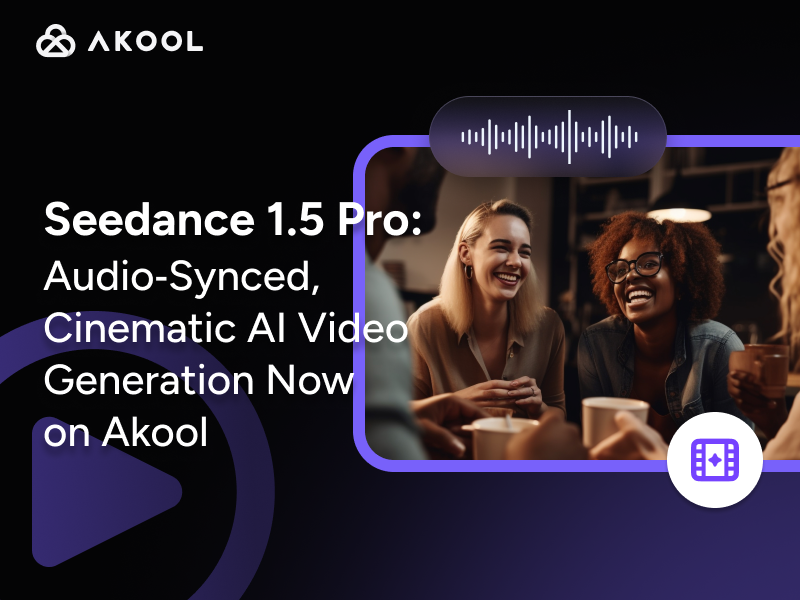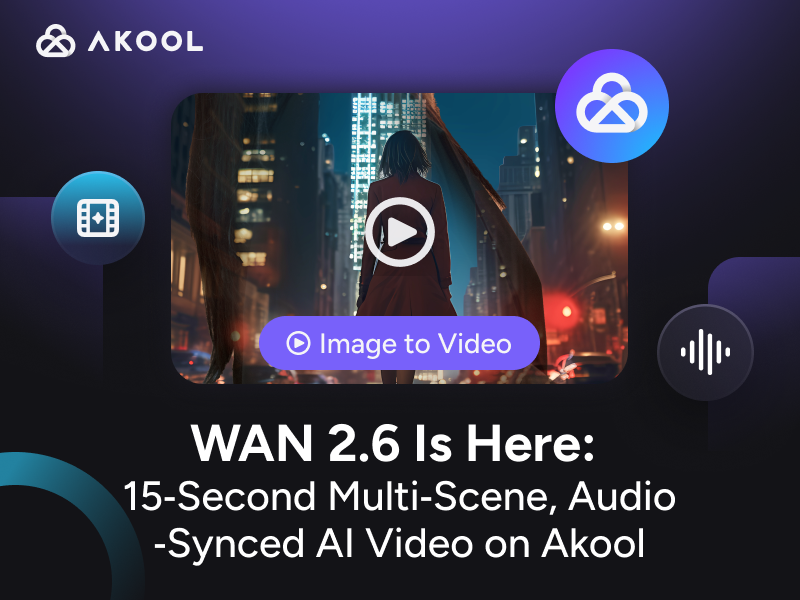Introduction to Speech-to-Speech Translation
Speech-to-Speech translation is the process of converting spoken language from one language to another in real-time. It involves three main steps: speech recognition, language translation, and speech synthesis. This technology enables seamless communication across language barriers, making it invaluable for global creators and agencies. By leveraging advanced algorithms, Speech-to-Speech translation enhances accessibility and collaboration, fostering a more connected and inclusive creative landscape.
How to Use Speech-to-Speech Translation
Understanding how to effectively employ Speech-to-Speech translation can enhance communication and creative projects across languages. Here's a breakdown of its use:
Definitions
- Speech-to-Speech Translation: The process of converting spoken language in one language to spoken language in another, leveraging speech recognition, language translation, and speech synthesis.
Capabilities
- Real-time Translation: Provides immediate translation, crucial for live events and dynamic interactions.
- Multilingual Support: Supports a wide range of languages, enabling broader reach and inclusion.
- Natural-sounding Output: Uses advanced text-to-speech technology for realistic audio output.
Steps to Implement
Select the Right Tool: Choose a Speech-to-Speech translation service that supports the languages you need and fits your technical requirements. Consider using AI dubbing tools or AI voice generator solutions for enhanced functionality.
Input Speech: Use a microphone or audio file to input the spoken language. Ensure clarity to improve accuracy—reduce background noise and speak clearly.
Speech Recognition: The system transcribes the spoken words into text. This step involves converting the audio signal into a text format the system can process.
Language Translation: The transcribed text is translated into the desired target language using neural machine translation models that consider context and meaning. You might explore AI translation tools for specific language requirements.
Speech Synthesis: The translated text is then converted back into spoken language, producing audio output in the target language.
Adjust and Optimize: Test and tweak settings, such as speech rate and pronunciation, to ensure the output meets your quality standards.
Useful Formulas
- Accuracy Rate: Measure the correctness of translations by comparing the output with a benchmark or native speaker's feedback.
- Latency Time: Evaluate the time taken from input speech to translated output to ensure it meets real-time communication needs.
By following these steps and understanding the underlying technology, creators and agencies can harness Speech-to-Speech translation to break down language barriers and enhance global collaboration. For more detailed insights on video translation tools, visit this resource.
Applications of Speech-to-Speech Translation
Speech-to-Speech translation is revolutionizing communication across industries. Here are some key applications:
- International Conferences: Real-time translation allows speakers to reach a global audience without language barriers.
- Customer Support: Companies use it to provide multilingual support, enhancing user experience and satisfaction.
- Healthcare: Facilitates communication between doctors and patients who speak different languages, improving healthcare delivery.
- Travel and Tourism: Tour guides and hospitality staff use it to assist international tourists, enhancing their travel experience.
- Media and Entertainment: Dubbing foreign films or TV shows in real-time, making content accessible to a wider audience. For tools that can aid in media translation, consider AI video dubbing tools.
These use-cases demonstrate how Speech-to-Speech translation is integral to fostering global communication and expanding market reach. Explore more on AI video translation for comprehensive solutions.
Technical Insights into Speech-to-Speech Translation
Speech Recognition
- Definition: Converts spoken words into text.
- Method: Uses machine learning models, such as deep neural networks, to interpret audio signals.
- Challenges: Accents, background noise, and speech variability require robust algorithms.
Language Translation
- Definition: Translates recognized text from the source language to the target language.
- Method: Employs neural machine translation (NMT) models, like transformer models, for context-aware translation.
- Features: Adapts to idiomatic expressions and semantic nuances.
Speech Synthesis
- Definition: Converts translated text back into spoken language.
- Method: Uses text-to-speech (TTS) engines, often based on deep learning, to produce natural-sounding speech.
- Capabilities: Supports multiple languages and regional accents, enhancing realism.
Integration Process
- Pipeline: Combines the three steps into a seamless operation.
- Real-time Processing: Leverages low-latency models for quick turnaround.
- Scalability: Designed to handle large volumes of simultaneous translations.
Future Directions
- Advancements: Ongoing research in improving accuracy and naturalness.
- Technologies: Incorporates advancements in AI and computational linguistics for enhanced performance.
| Technical Component | Description | Challenges |
|---|---|---|
| Speech Recognition | Converts audio to text using machine learning | Accents, noise |
| Language Translation | Translates text between languages using NMT | Contextual nuances |
| Speech Synthesis | Converts text back to audio using TTS engines | Naturalness of speech |
Useful Statistics on Speech-to-Speech Translation
Understanding the metrics and statistics behind Speech-to-Speech (S2S) translation can provide valuable insights into its capabilities and potential growth. Here are some key statistics:
- Market Size & Growth:
- The global speech-to-speech translation market was valued at approximately USD 170 million in 2022.
It is projected to grow at a CAGR of 14.5% from 2023 to 2030. This significant growth rate indicates a rising demand for real-time translation services, driven by globalization and the increasing need for seamless multilingual communication in business, travel, and online content creation.
Language Coverage:
As of 2023, leading speech-to-speech translation systems support over 70 languages. Expanding language coverage allows businesses and developers to reach wider audiences, breaking down language barriers and enhancing global engagement.
Accuracy Improvements:
Recent advancements have led to accuracy improvements, with current systems achieving an average of 85% in transcription accuracy for major languages as of 2023. Higher accuracy levels enhance user trust and satisfaction, making these systems more viable for critical applications such as healthcare and legal services.
Real-Time Translation Latency:
- State-of-the-art systems have reduced translation latency to less than 500 milliseconds. Low latency ensures smoother and more natural conversations, crucial for applications in live settings such as conferences and customer service.
| Metric | 2022 Value | 2023 Projection |
|---|---|---|
| Market Size (USD Million) | 170 | Growing at 14.5% CAGR |
| Language Support | 70+ languages | Expanded coverage |
| Transcription Accuracy (%) | 85 | Improved accuracy |
| Translation Latency (ms) | <500 | Reduced latency |
These statistics highlight the rapid advancements and adoption of speech-to-speech translation technologies, underscoring the importance for creators and developers to integrate these solutions into their projects to enhance communication and expand market reach.
Frequently Asked Questions about Speech-to-Speech Translation AI Service
What is Speech-to-Speech translation and how does it work?
Speech-to-Speech translation involves converting spoken words from one language to another in real-time. Our AI service uses advanced algorithms to transcribe, translate, and synthesize speech, making cross-lingual communication seamless.
Can the Speech-to-Speech translation AI handle multiple languages?
Yes, our service supports a wide range of languages. We continuously update our language database to include more languages and dialects, ensuring comprehensive global communication.
How accurate is the Speech-to-Speech translation AI?
Our AI is designed to offer high accuracy by employing state-of-the-art neural networks and machine learning techniques. However, accuracy can vary based on language complexity and audio quality.
Is the Speech-to-Speech translation service suitable for business use?
Absolutely. Our service is ideal for businesses needing real-time translation for international meetings, customer service, and global outreach, enhancing communication efficiency and effectiveness.
How secure is the Speech-to-Speech translation service?
We prioritize user privacy and data security. Our service employs robust encryption protocols to ensure that all data is securely processed and stored, adhering to industry standards.
Does the Speech-to-Speech translation AI support dialects and regional accents?
Yes, our AI is trained to recognize and process various dialects and regional accents, providing more personalized and accurate translations.
What are the hardware requirements for using the Speech-to-Speech translation service?
Our service is cloud-based, meaning it can be accessed from any device with an internet connection, requiring no additional hardware investment.
Can the Speech-to-Speech translation AI be integrated with other applications?
Yes, our service offers API integration, allowing seamless incorporation into existing applications and systems, enhancing your current technological infrastructure.




